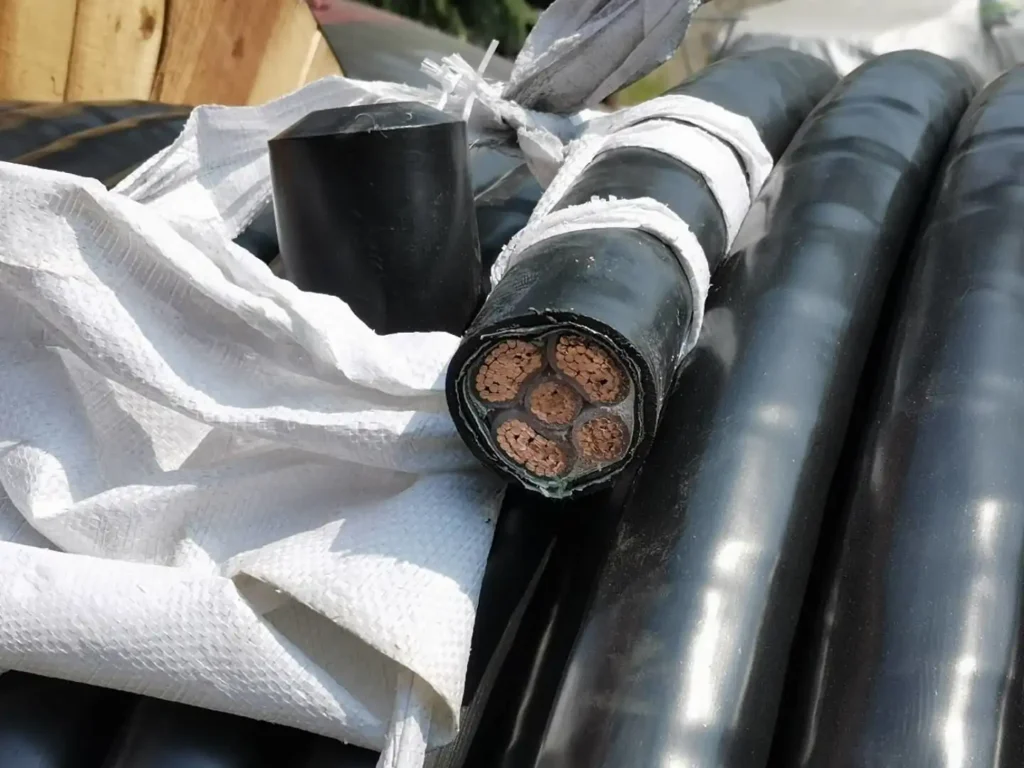In modern industrial material fields such as electric wires and cables, waterproof membranes, and industrial rubber hoses, Chlorinated Polyethylene (CPE) rubber is favored for its excellent weather resistance, ozone resistance, and chemical stability. However, CPE faces a critical challenge in processing and application: insufficient thermal stability. In high-temperature environments, CPE can easily decompose and release hydrogen chloride (HCl), leading to material degradation, reduced performance, and even equipment corrosion. At this juncture, a seemingly ordinary yet crucial material—magnesium oxide (MgO)—emerges as the core additive to solve this problem.

The Multifaceted Role of Magnesium Oxide in CPE Rubber
In CPE, magnesium oxide primarily functions as an acid scavenger and heat stabilizer.[1] When CPE thermally decomposes during processing or long-term use, it releases HCl gas, creating a self-catalytic degradation cycle. Magnesium oxide rapidly absorbs HCl through a chemical reaction, forming stable magnesium chloride (MgCl₂) and water, thereby interrupting the degradation chain reaction: MgO + 2HCl → MgCl₂ + H₂O.
This process not only inhibits material aging but also significantly enhances the heat resistance, mechanical strength, and long-term service life of CPE. Furthermore, the addition of magnesium oxide can improve the processing fluidity of the rubber compound, reduce scorching during extrusion, and enhance the cross-link density of the vulcanized rubber, making the final product more resilient.
Technical Challenges: Why the Performance of Magnesium Oxide is Crucial
The performance of magnesium oxide directly impacts the quality of CPE products. Purity, particle size distribution, and activity are three key indicators:
- Purity: Impurities (such as CaO, Fe₂O₃) can trigger side reactions, leading to discoloration or performance fluctuations in the rubber compound.
- Particle Size: Nano-sized particles provide a larger specific surface area, enhancing reaction efficiency.
- Activity: High-activity magnesium oxide can quickly neutralize HCl, but it is necessary to balance processing stability with reaction speed.
Traditional magnesium oxide is prone to caking due to moisture absorption or causing “blooming” on the rubber surface due to uneven dispersion, thus placing extremely high demands on the production process.
Messi Biology: An Innovative Leader in High-Purity Active Magnesium Oxide
The domestic high-end magnesium oxide market has long relied on imports, but Messi Biology has changed this situation through independent technological breakthroughs. The high-purity nano-magnesium oxide series developed by the company achieves a purity of over 99.9%, with particle size controlled within the 100-800 nanometer range. Surface modification treatment has significantly improved its dispersibility and moisture resistance.
Its product advantages include:
- Precise Activity Control: The calcination process is used to control crystallinity and activity, adapting to the needs of different CPE processing temperatures.
- Nano-scale Dispersion Technology: The modified magnesium oxide is uniformly distributed in the rubber compound, avoiding performance defects caused by localized agglomeration.
- Environmental Friendliness and High Efficiency: The efficiency of neutralizing HCl is more than 30% higher than that of ordinary magnesium oxide, reducing the amount added while lowering production costs.
In the field of cable sheathing, CPE rubber with “Messi” high-purity magnesium oxide can pass long-term thermal aging tests (e.g., 135°C × 168h), with a tensile strength retention rate of over 90%. In waterproof membranes, its weather-resistant lifespan is extended to over 20 years. Moreover, the addition of magnesium oxide imparts a certain degree of flame retardancy to the material, as its endothermic decomposition characteristics can inhibit the spread of fire.
Although magnesium oxide is only a “supporting role” in the CPE formulation, it is a key factor that determines the upper limit of the material’s performance. Through the fine polishing of material science, it is moving from behind the scenes to the forefront, becoming an indispensable “invisible guardian” in modern industrial rubber compounds. As the application fields of CPE expand to high-end scenarios such as new energy vehicle wiring harnesses and photovoltaic cables, the performance requirements for magnesium oxide will become increasingly stringent. Messi Biology is continuously advancing research and development in directions like nano-composite magnesium oxide and low-alkali, controlled-release magnesium oxide to meet more advanced material demands.
